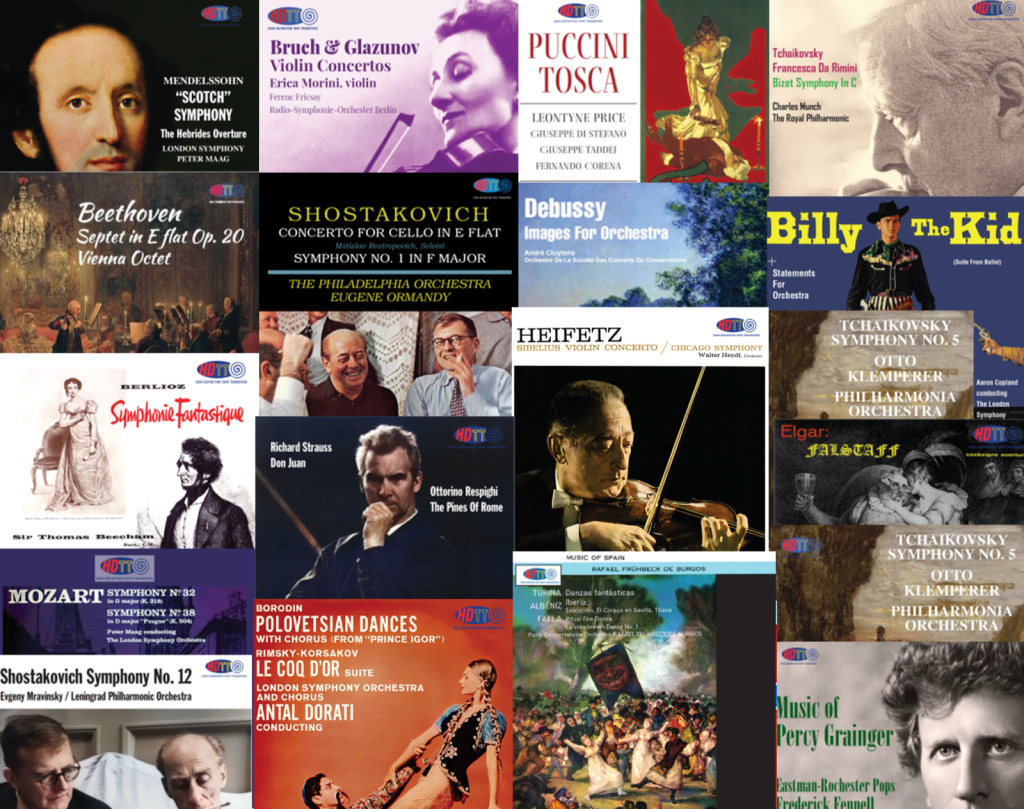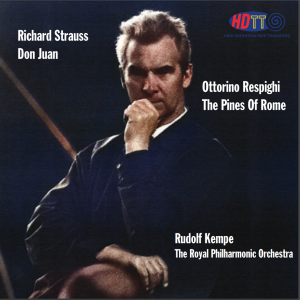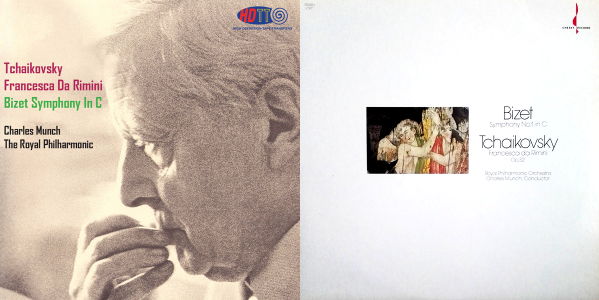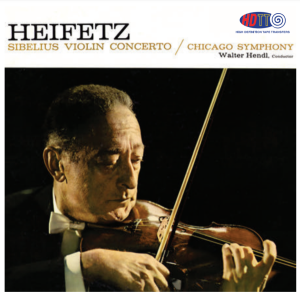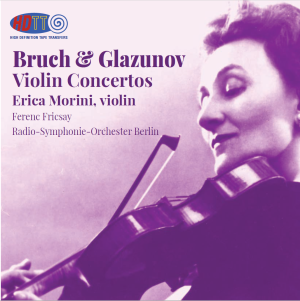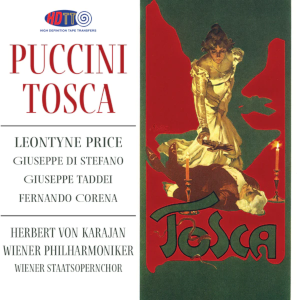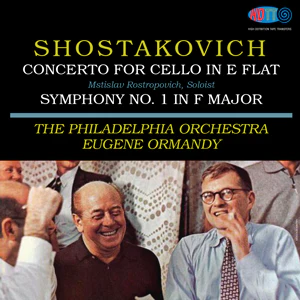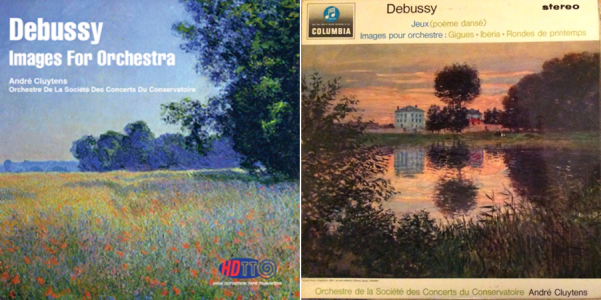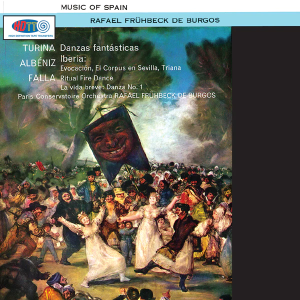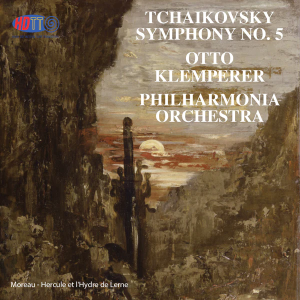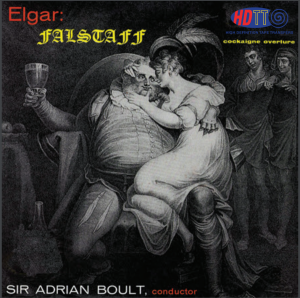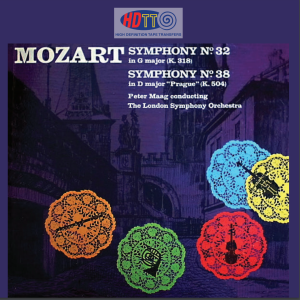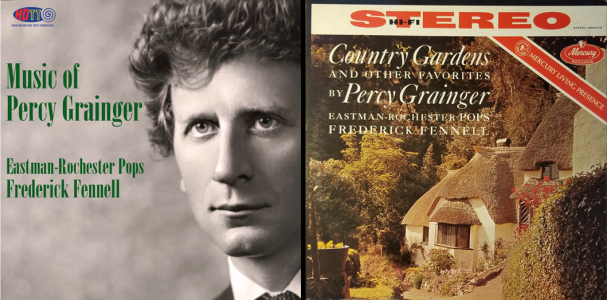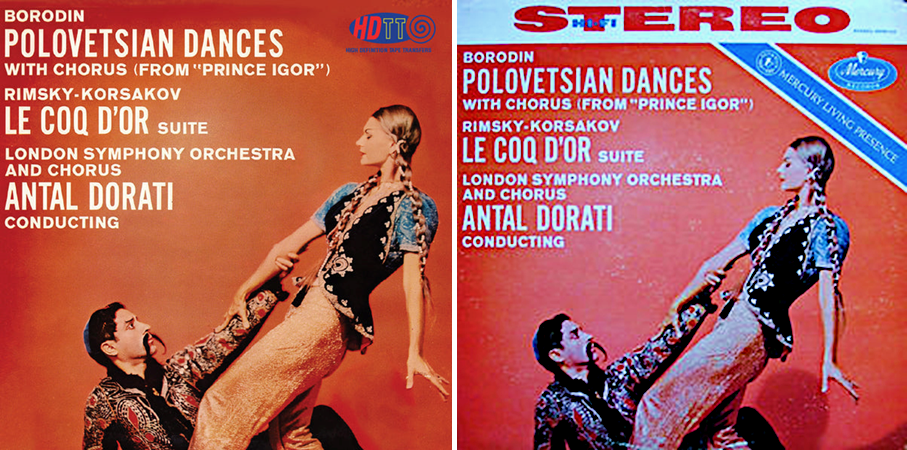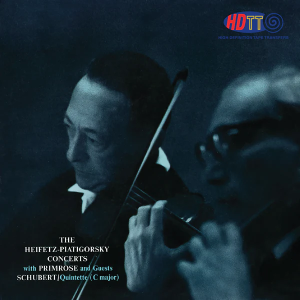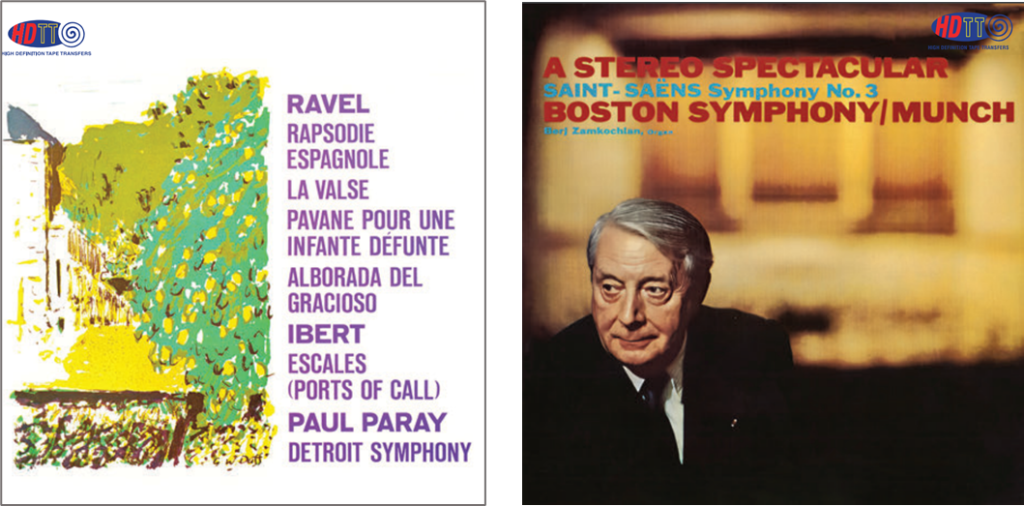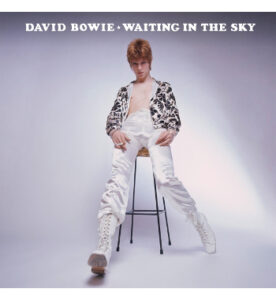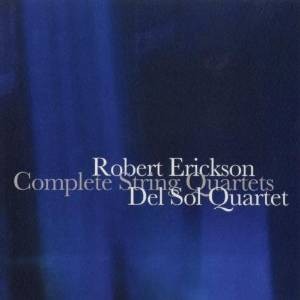High Definition Tape Transfer has been on quite a roll in 2022 with a strong schedule of new releases. Their jazz releases in 2022 have been phenomenal and, hopefully, merited your attention. But, the classical albums they've reissued have been similarly outstanding, including performances in the top echelons of the catalog such as the Mercury Living Presence recording by Paul Paray of Music by Ravel and Ibert (reviewed HERE) and the iconic RCA Living Stereo recording by Charles Munch of the Saint-Saens Organ Symphony (reviewed HERE). Below are some additional classical releases that are each a wonderful addition to my music library and well worth your consideration.
And more! HDTT keeps releasing new classical recordings as this article sits in the queue to be published, so I keep adding the ones I find to be really nice from both a performance and an audio perspective. Be sure to scroll down to the end.
I swear I think some of legendary Decca recording engineer Kenneth Wilkinson's greatest recordings came when he was recording on contract for Lyrita and Readers Digest. And the two recordings here are among Wilkie's best outings, in my opinion. (For more Wilkinson recordings available at HDTT, including a few more from the Readers Digest Series, see my earlier articles HERE and HERE.)
Rudolf Kempe Conducts Don Juan & The Pines Of Rome, The Royal Philharmonic Orchestra. HDTT 1964, 2022 (DXD, DSD256) HERE
What makes this recording really stand out is the "over the top" performances from Rudolf Kempe and the RPO. Kempe just lets it all rip! And the RPO members play their hearts out for him. Kempe's Don Juan is powerful, dynamic. and driving. But, he slows things down nicely to really savor the lyricism and delicacy that makes up so much of this work. It is just a superb performance, filled with color, sinewy dynamism, and taut emotional contrasts. The orchestra simply "nails" the details.
His Pines of Rome is similarly powerful and beautifully played. The opening lines of swirling notes and color are beautifully delivered and set the stage for a completely engaging and dramatic overall performance. Horns, brass, percussion (huge orchestral gong) - oh, my yes. It is a sound junkies delight. Would I give up my treasured Reiner performance to live solely with this? Hmmm, perhaps… It is that good.
The sound quality throughout is excellent. While it doesn't have that utter sonic transparency of the Pure DSD256 transfers from several of the recent 15ips jazz tapes that Bob has so brilliantly brought to us, it is utterly excellent. It is as good a transfer of this Readers Digest recording as I suspect I shall ever get to hear. I had the original Readers Digest/RCA releases on vinyl, and each of Bob's transfers thus far have sounded better to me than I recall of the vinyl (all of which was beautifully mastered and pressed back in the day). I hope he will be continue to find more of these Kenneth Wilkinson and Charles Gerhardt gems to share with us.
Tchaikovsky Francesca da Rimini, Bizet Sym In C, Munch, The Royal Philharmonic. HDTT 1962, 2022 (DSD256, DXD) HERE
L-R: HDTT cover, Chesky LP cover (just to jog memories)
And here is yet another wonderful album from the Readers Digest series of recordings made by recording engineer Kenneth Wilkinson and producer Charles Gerhardt. It has long been a favorite album of mine. As with the Rudolph Kempe Don Juan recording above, HDTT doesn't tell us anything about the source they had available in making this DSD256 transfer, but they have done a superb job in giving us this marvelous recording in rich, full, transparent sound. The outstanding quality of Wilkinson's 1962 recording is set forth brilliantly.
Munch is a magician in these performances. His Francesca da Rimini is perhaps the best ever produced, with large orchestra and large recording venue and emphasized by that deep reverberating gong that comes across enormously well in this transfer. There is delicious madness in the brass, percussion, and gongs whirling through the closing moments. Turn the volume up and let it rip!
Don't know the story the music seeks to tell? Ah, lovers who shouldn't be together and are ultimately chased to hell by demons. Classic, right? (See Wiki for a longer explanation.)
And Tchaikovsky does this to a fare thee well. As Amazon reviewer Benjamin R. Garrison comments: "The gong and cymbals are really great in this one. For example, the gong in at the beginning of the whirlwind somehow manages to sound mocking and evil. (Just like in Liszt's Dante Symphony—Franz manages to make a harp sound mocking and evil, too). How is that possible? Well, it happens in this here. The demons call with deep and resonating voices. The violins scream "I don't care, I want it!" and the violas, cellos, basses are saying at the same time, "No you don't!" The brass section punctuates both ominously with "this is big trouble." The side characters all play their parts. The little helpless flourishes of the flutes are victims of the relentless whirlwind, but their pathetic little cries are still clearly heard. The Paolo/Francesca love theme in the middle is Tchaikovsky at his lyrical finest...it is very touching. It would make Dante himself cry. The finale here is more drawn out than most. This tragedy does not wrap up quickly. And as in Liszt's Dante Symphony, there is madness here. The gongs and cymbals seem to sound like demon whips that are sending the unfortunate souls on their way."
Munch delivers Bizet's delightfully light-hearted Symphony in C with lightness, spirit and sparkle in a decidedly excellent performance. But it is the Francesca for which I come to this album.
Decidedly recommended!
Mendelssohn The Hebrides Overture, Symphony No. 3, Peter Maag, LSO. HDTT Redux 1960, 2022 (DSD256, DXD) HERE
These are great performances in superb recordings by the great Decca recording engineer Kenneth Wilkinson. The original release by HDTT was very good. This new Redux release is so much better in so many ways. The sound quality is now at the "simply stunning" level of enjoyment.
I don't know whether Bob Witrak gained access to a different tape, or whether he's just re-transferring with his new processing setup. He doesn't say. My original file is in DSD128 and I believe it came from a DXD transfer, but can't be sure about that. This transfer I know was made via DSD256 and then post-processed in DXD for some cleanup work Bob felt the tape needed (a very common need for these vintage tapes with which he is working). Whatever the case, in this new release compared to the original, I'm hearing greater transparency, greater detail, more specific localization of instruments, more air, and greater frequency extension. The original transfer was very, very good, but this new Redux edition in DSD256 is just better all the way around.
What makes this such a great performance and recording? Peter Maag and Kenneth Wilkinson.
Conductor Peter Maag was simply exceptional in his various performances of Mendelssohn for Decca. He captures the magic of Mendelssohn's melodies and orchestration in a way that few have been able—filled with delicacy and lightness, then blazing intensity, followed by lyrical waft and flow. He was a magician, in my opinion.
And then to have Kenneth Wilkinson working his magic with the microphones—oh, my! One hears the orchestra with full weight, full breadth and depth of image, extraordinary detail, without obvious spotlighting. Such a pleasure.
This is perhaps my favorite Decca recording, so please grant me a bit of grace over my abundant enthusiasm. I could not recommend this release more highly.
Sibelius Violin Concerto, Jascha Heifetz, Walter Hendl, The Chicago Symphony Orchestra. HDTT 1959, 2022 (DSD256, DXD) HERE
Arguably the greatest performance of the Sibelius concerto in the catalog. It is certainly the most passionate and intense, with Heifetz delivering a superb interpretation and Hendl and the CSO providing excellent (if not overly imaginative) accompaniment. Heifetz may arguably not surpass his original 1935 recording, but his "violin still sings, exults, blazes and dominates," as The Strad concludes.
This has always been my benchmark recording and it's a pure joy to find it reissued in such excellent sonics by HDTT. It punches all my buttons for resolution, detail, dynamics, impact, dynamics... the list of superlative sonic characteristics just goes on. Lewis Layton's recording is, of course, beyond excellent. The SACD release of this recording was good, but, as Rob P., a purchaser on the HDTT website, writes, this new transfer by HDTT "has more space and presence, the instrumental timbres are more analogue and the bass is tighter." This HDTT release allows us to hear every nuance of the resolution Layton extracted from Orchestral Hall. I can't imagine anyone being the least disappointed by this release. I am ecstatic over it!
Bruch & Glazunov Violin Concertos, Erica Morini (violin), Ferenc Fricsay. HDTT 1959, 2022 (DXD, DSD256) HERE
Erica Morini was one of the great violinists of the 1950s, along with the wonderful Joanna Martzy. t is a pleasure finding Morini's recording here. (The HDTT catalog currently contains only one Martzy recording—we need more!)
Morini has a restrained, but very sweet, delicate sound to her playing. Some might call it a "small" sound. But the gentleness and refinement of her performances are always a delightful respite from the loud, noisy, bravura playing so often heard. And she is virtuosic in her own right. Her performance of the Bruch concerto is more measured than fiery, but has depth of meaning and character to it. And in the Finale she demonstrates a drive and fire that suits the work well. Her Glazunov was well received by the critics when released, and she receives excellent support from Fricsay and the RSO-Berlin.
While this recording of the Glazunov was eclipsed by the release of the Jascha Heifetz performance on RCA, it is wonderful to have it available from HDTT. The sound quality is up to HDTT's usual high standards—in a word: Excellent.
Puccini Tosca, Leontyne Price, Giuseppe di Stefano, Giuseppe Taddei, Fernando Corena, Herbert von Karajan, Wiener Philharmoniker, Wiener Staatsopernchor. HDTT 1962, 2022 (DXD, DSD256). HERE
This is perhaps the best Tosca ever recorded. It is a legendary performance. Superb conducting by von Karajan, a great Tosca in Leontyne Price (a role she "owned"), and the most evil-sounding, bone-chilling, Scarpia ever heard in Giuseppe Taddei. Leontyne Price is in her prime, her performance is mesmerizing. Many adore Callas in this role, but Price's voice is simply majestic here. And di Stefano's Cavaradossi is suitably heroic and dramatic. His voice nicely suits the mature, no longer youthful, Cavaradossi.
If you are an opera fan, you will have your favorites. If you're not yet a fan of opera, this is a great start to the grand tradition of over-the-top romantic stories—with heroic protagonists, evil characters, and great drama.
The sound quality is classic Decca excellence. With John Culshaw producing, one can have confidence in the outcome, and here that sonic outcome is superb.
HDTT's transfer is yet another triumph: clean, clear, highly resolving, very low noise floor. Simply beautifully accomplished. And it retains all that wonderful, relaxed analog excellence in voices and instruments for which the original Decca LPs are so highly valued. Well done!
Shostakovich Cello Concerto & Symphony No. 1, Mstislav Rostropovich, Eugene Ormandy, Philadelphia Orchestra. HDTT 1959, 2017 (DXD) HERE
Of the excellence of this Cello Concerto recording little needs to be said. Rostropovich delivers an astonishingly forceful performance which might still be definitive. It definitely remains at the top of my preferences for this work. The performance is colossal, and it is brilliantly accompanied Eugene Ormandy and the Philadelphia, who were at the height of their inarguable excellence. It's a marvelous piece of music, with humor (frequently sardonic), tenderness, and power. Although it was new music in 1959 (composed earlier that year) it is very accessible, and the recording does it justice. Rostropovich's tone is lean and his phrasing is engaging and a firm rhythmic grip. As the first western recording of this concerto, it is a historic performance. But splendid as music in its own right.
The First Symphony was written in 1926, when the composer was only 18, and he's showing off for the crowd. It is a potpourri of sly sardonic music, café music, music hall, and send-ups of bits of The Nutcracker. Here we meet a young composer who sounds precisely like the talented gadfly he was at this age, but with some lyrical passages that hint of depths deeper and darker. As a whole, the symphony is great fun. There are lots of different textures and it is short enough not to challenge one's attention span. The Philadelphia get quite a workout and Ormandy holds it all together.
The sound on this transfer from tape is the best sound in which I've ever heard these two works. Far far better than any of the early "6-eye" LPs once in my collection (I never had the Speakers Corner 180 gram reissue), and far better than the CD I later added. The sound on this DXD transfer by HDTT is simply excellent. Nice full frequency extension, excellent detail, very good dynamics, and quite a lovely low noise threshold. One might never guess this recording comes from 1959, although a shade less transparent than a modern recording might be. (But, then, we wouldn't have Rostropovich and Ormandy either.) Highly recommended.
Beethoven Septet in E flat, op. 20, Members of the Vienna Octet. HDTT 1959, 2017 (Pure DSD256) HERE
Recorded by Decca in March 1959 in the Sofiensaal, Vienna, this album has long been one of my most cherished chamber music recordings both in its original London issue and later in the SuperAnalogue 180 gram vinyl reissue. I was so excited to find it a couple years ago in the HDTT catalog in this extraordinarily clear, clean and open transfer. (From a 15ips tape? HDTT doesn't say, but it sounds like it may be.) The music is among Beethoven's best chamber music compositions. It is graceful, suitably complex without strain, and nicely inventive with the use of strings, bassoon, clarinet and horn. It is simply delightful. And the playing is to die for! The members of the Vienna Octet are masters. Here they perform at the height of their well-regarded powers, filled with grace, elegance, and charm. And most suitably spirited where called for.
This is glorious music, beautifully recorded and remastered. The depth and richness of the strings is wonderful. It should be in every music-lover's library.
Debussy Images pour Orchestre, Andre Cluytens, Paris Conservatoire Orchestra. HDTT 1964, 2016 (DXD) HERE
This is one of the excellent early EMI/Columbia SAX recordings prized for its excellent performance and exceptional sound quality on vinyl. And justifiably so! Here in this superb HDTT transfer one gets to experience just how marvelous this 1964 recording actually sounds. Recorded in the Salle Wagram, Paris, the orchestral Images are wonderfully poised in a most pleasing acoustic with full extended frequency sound. The great French conductor, Andre Cluytens had, by the time of this recording, developed the Conservatoire Orchestra into one of the greatest performance orchestras on the continent. He'd worked on that effort since his appointment in 1949 and the subtlety and clarity Cluytens manages to obtain demonstrates his achievement. There several performances in my collection that compete with this, but I know of no performance that exceeds it. And EMI/Columbia does full justice to the performance in the transparent capture of the orchestral sound. Heartily recommended!
Music of Spain, Raphael Frühbeck de Burgos. HDTT 1963, 2022 (DXD, DSD256) HERE
Raphael Frühbeck de Burgos was a master at capturing the Spanish flair of these works, and the Paris Conservatory Orchestra of this period did not let him down. Filled with nuance, inflection, and the sheer joy of music-making, these are excellent performances.
The sound quality is classic EMI mid-hall sound. Without sacrificing orchestral detail, the recording nicely captures the warmth and air of the Salle Wagram, Paris, and delivers a spacious recording of excellent orchestral breadth and depth. A very nice transfer from HDTT, indeed. Recommended.
And, don't forget de Burgo's marvelous performance of Manual de Falla's complete The Three Cornered Hat, also available from HDTT. See my earlier review HERE.
Berlioz Symphonie Fantastique, Sir Thomas Beecham, French National Radio Orchestra. HDTT 1958, 2022 (DSD256, DXD) HERE
This recording of Symphonie Fantastique has long been highly regarded. And it remains quite competitive after over 60 years of new recordings. It certainly held a place in my vinyl library for many years, with many return trips to the turntable due to its many virtues.
What makes this such a special recording for me is Beecham's interpretation—highly dramatic, but without going to excess. He retains that delicate balance between excitement, suspense, and Romantic scene painting (to borrow a phrase from the liner notes). He renders the hallucinatory scenes vividly. And he flows naturally and easily from one sequence to another, retaining a sense of the beauty of line and expression while contrasting sharply with derangement and terror. This all works brilliantly, and often much more successfully than other performances that seem manically driven without pause.
The sound quality is classic mid-hall EMI, beautifully captured in this excellent HDTT transfer. The underlying recording is perhaps not the last word in transparency and resolution, but the EMI engineers captured the timbre of the instruments, good dynamics and frequency extension, and some nice hall ambiance. This HDTT transfer sounds better than my memory of any of the several LP releases I had of this recording, several of which tended to the thin and strident. Not here. In this HDTT transfer, the sound is full, weighty and richly textured, while nicely capturing the piquant winds for which French orchestras have been so well known in the past.
Tchaikovsky Symphony No. 5, Otto Klemperer. Philharmonia Orchestra. HDTT 1963, 2022 (DXD, DSD256) HERE
This is a majestic performance by Klemperer and the Philharmonia Orchestra. Klemperer moves things right along but gives space for all of the nobility which this music contains. Some may quibble about tempo choices here and there, but overall this is an excellent performance. If you are tired of how quickly Mravinsky takes it and are frustrated with how slow (and sappily) some others play it, you will join me in finding great satisfaction in this version.
Yes, the fourth movement is played at a slow, and slower, pace. But is has majesty. And given the felicities of the earlier movements, I'm willing to accept Klemperer's grandeur here. The very end is as rousing as any performance we have.
The sound quality is up to HDTT's usual standards. In a word: Excellent.

Copland Billy the Kid Suite, Statements for Orchestra, Aaron Copland (conducting). London Symphony Orchestra. HDTT 1958, 2022 (DSD256, DXD) HERE
This is an Everest recording from 1958, produced by the inestimable Bert Whyte. Now released in DSD256/DXD by HDTT with outstanding sound quality! The recording is transparent, alive, very detailed. The orchestra is laid out before us in excellent breadth and depth. Bert Whyte was a recording engineer, but his true value in these Everest recordings was his contribution as the producer where he controlled the full aesthetic range of the production.
Much has been written over the years about composers conducting their own music. I am firmly in the camp of both LIKING and VALUING the recordings Aaron Copland made of his own music. His approach is direct, with no nonsense. There are no stretched out phrases (as with some self-indulgent conductors who will go nameless), there is no hyperbole. As pianist Michael Boriskin writes about Copland conducting the original chamber-ensemble scoring of Appalachian Spring, "Like his music, this recording is full of character, understated and direct, poised and dignified, spacious, buoyant, and warmly expressive." (HERE) It is so in Billy the Kid, as well.
Copland's approach to his own music is particularly important for a performance of Statements for Orchestra (1932-35). The Statements belong to what has been termed Copland's abstract phase of the middle 1920s and early-to-middle 1930s. Copland had returned from Paris in 1924 determined to create music that was "as recognizably American as Mussorgsky and Stravinsky were Russian." He embraced modernist dissonance and tone clusters, composing avant-garde music that seemed intentionally designed to provoke audiences. Statements is part of that hard-edged musical style of this period, albeit right at the very end. To have it contrasted with Billy the Kid (1938), that epitome of Americana, is a refreshing and educational coupling.
For me, this is a recording that should be in every music library. And this new release in such excellent sound quality is both highly appreciated and recommended.
Elgar Falstaff, Cockaigne Overture, Sir Adrian Boult. Philharmonic Promenade Orchestra. HDTT 1957, 2022 (DSD256, DXD) HERE
This is a rare early stereo recording released by Westminster Records in 1957. Today we sometimes forget about the Westminster label. We shouldn't. In its day Westminster was producing state of the art recordings that continue to sound absolutely terrific when you can find them.
The Westminster Labs series was truly the audiophile label of its day. Well this is not a Labs recording, but it is still excellent. It holds its own easily among the Mercury and Decca recordings of the period. Sir Adrian Boult is perhaps the pre-eminent interpreter of Elgar's music. And here Boult is on top of his game with a lively, insightful, sometimes saucy, sometimes wryly humorous, interpretations of two of Elgar's most accessible and enjoyable pieces of music. If you think you don't like Elgar, and you've not listened to these two works, well... you have a treat in store. A delightful discovery, perhaps.
Now, for a stunning Westminster Labs recording, you really should have this 1956 stereo recording of Stravinsky's L'Histoire du Soldat in your collection. See my earlier review HERE.
L-R: Original Westminster Labs cover; HDTT cover for a Pure DSD256 transfer from a Westminster Sonotape 2-track 15ips tape.
Mozart Symphony No. 32 - Symphony No. 38 "Prague", Peter Maag. London Symphony Orchestra. HDTT 1959, 2022 (DSD256, DXD) HERE
This is delightful "big band" Mozart performed by a master interpreter of his symphonies, Peter Maag. The Symphony No. 38, "Prague," is a celebrated Decca recording and the sound engineering by Kenneth Wilkinson is justly acclaimed. But it is Maag's performance that holds one's attention - at turns thrilling, gracious and dazzling, this is a performance I have long treasured. It is such a great pleasure to find it in this superb reissue from HDTT. The sonics of this transfer are indeed a treasure, they do Kenneth Wilkinson proud! Why not five stars (if I were into awarding stars)? The sonics lack just that tiny smidgeon of "aliveness" and "transparency" that mark the best of HDTT's transfers. But, don't let that dissuade you. This DXD release is a wonderful reissue to have available; I can't imagine one can find it in better sonics.
Is this the "best" performance of the "Prague" Symphony available today? I hate to get into those comparisons, but I would be remiss not to mention the excellent chamber orchestra performance from Sir Charles Mackerras and the Scottish Chamber Orchestra on Linn Records and the classic full orchestra performance from Karl Bohm and the Berlin Philharmonic. Unfortunately, both of these are available only as 24-88.2 or 24-96 kHz downloads. Both Linn and DG have made the regrettable decision that recordings needed no greater resolution than 88.2 and 96 kHz. Such a loss for the community of listeners who value truly high definition audio. While both of these alternative performances are excellent and have their own very decided benefits, neither has the naturalness of instrumental timbre and analog sonic ease found on this HDTT release of the Maag. At the end of the day, I'll return to the Maag performance pretty much each time to savor his superb phrasing and flexibility of line, but this is clearly just a personal preference.
Music Of Percy Grainger. Frederick Fennell, Eastman-Rochester Pops. HDTT 1959, 2022 (DSD256/DXD) HERE
L-R: HDTT Cover, original Mercury Living Presence cover
I thought I'd put this article to bed, and I'd say it's almost not fair, but I simply can't complain about finding yet another outstanding classical recording released this past week by HDTT.
What a delightful discovery is this release from HDTT: a superbly recorded Mercury Living Presence album (SR-90219) in outstanding sonics. Whatever you may think of Percy Grainger's music, you need to hear this Mercury recording in this excellent transfer. For me, Percy Grainger's music is largely that light fluffy taffeta with which a little goes quite a long way. Still, this collection of Grainger works is completely enjoyable, and some pieces verge on outstanding. Get it for the excellent sound quality, enjoy it for the delightful 45+ minutes of head bobbing and toe tapping that will follow as you listen to these tunes.
Originally released by Mercury as Country Gardens And Other Favorites By Percy Grainger (SR-90219) this album never got the wide recognition among audiophiles as did other Mercury albums that included a bit of Grainger's music. But sonically it is every bit as good and better as many of the more well known masterpieces that Bob Fine and Wilma Cozart produced for Mercury.
From the enclosed booklet: Australian-American composer Percy Grainger (1882-1961) "was known during his lifetime as a virtuoso pianist and arranger of popular English folk song. His primary contribution to music, however, lies in his prolific output as a composer of expert and highly original works. Grainger's early years were spent in Melbourne... From 1895-1899 he attended the Hoch Conservatory in Frankfurt, Germany, and then settled in London in 1901. The next 10 years or so were devoted to a combination of concert touring and folk song collection. He became an American citizen in 1918.
"...Early in his life, Grainger rejected the central European tradition of Western classical music, seeking instead a 'democratic' music that was more closely related to natural sounds, speech, and world music. In his quest to assimilate as much unique musical culture as possible, Grainger became one of the first ethnomusicologists to use the wax cylinder phonograph in the collection and transcription of indigenous music. His arrangements of many of these are among the best ever done, capturing not only the melodies and harmonies, but also the timbres, inflections, and performance styles of each individual piece...
"In his own compositions, Grainger experimented with nontraditional rhythms, forms, and instrumental combinations in an attempt to create what he called 'free music.' He also created a large body of more traditional works and arrangements intended for more popular consumption, motivated, no doubt, by his experience with the Edwardian music hall and later with the U.S. Army Band."
Rimsky-Korsakov and Borodin by Antal Dorati, London Symphony Orchestra & Chorus. HDTT 1956, 2022 (DXD/DSD256) HERE
L-R: HDTT Cover, original Mercury Living Presence cover
One of the great Mercury Living Presence recordings by Bob Fine and Wilma Cozart. A very nice, clean, reasonably detailed transfer from what I presume was a 7.5ips tape. I don't have another reissue to compare to this one, but I very much like what I'm hearing. The instrumental sound has very nice balance and detail, the orchestra is presented with the usual Mercury felicities of scale and breadth.
Second listen this morning, and today I am much more favorably impressed with the overall sound quality of this reissue. I don't hear what I thought on first listen to be some congestion in loud passages. Today, clean, clear, and detailed. Good definition in the tympani and other percussion. Do digits sound better with some playing time, like a good wine tastes better after it breathes? I think not. But still... Today the system very much likes this recording! Enough so to return with a top rating for this release!
I don't have another digital reissue of this recording to compare to what I'm hearing here, but I doubt seriously that any CD version would come close to the naturalness of instrumental timbre that this transfer delivers.
Note: As pointed out by Rob P. in his comments about this release on the HDTT website, the Overture to Prince Igor is contained on this release by HDTT even though not listed on the cover. The Overture is a bonus of 11 minutes of additional great music that was recorded by Dorati and the LSO in June 1959 (also in Walthamstow Town Hall), and released by Mercury in 1960 on SR90265. If you pay attention, you'll hear the difference in sound quality (richer) on this track from the later recording.
Heifetz, Piatigorsky Concerts Schubert: Quintette (C Major). HDTT 1964, 2022 (DXD, DSD256) HERE
I've loved these Heifetz-Piatigorsky Concerts since I heard my first one over 50 years ago. How can you argue with chamber music played this beautifully by these artists? HDTT gives us a superb transfer to digital in every way. The sound is immediate, very highly resolved, beautifully balanced and with that lovely analog sound that comes across so nicely. Just excellent in all respects.
Shostakovich Symphony No. 12 "1917", Evgeny Mravinsky, Leningrad Philharmonic. HDTT 1962, 2022 (DXD) HERE
A searing performance of Shostakovich's most fraught symphony. I have long been a fan of Mravinsky's performances of Shostakovich. He gets right the power, drive, and menace which pervade quite a few of Shostakovich's symphonies, including the 12th. He may not pick up on the sarcasm and cynicism which modern listeners now expect, but his performances are always alert, powerful and immensely brutal where called to be.
In this performance, Mravinksy and the orchestra are in full battle mode--insistent driving rhythmic bowing from the strings, powerful tympani, forceful brass—it is one gut stroke followed by the next. Yet the slower, lyrical "Ravliv" movement gets a full dose of beauty and melancholy before we are returned to the storm.
My only reservation about Mravinsky's recordings over the years has been the often coarse brittle sound from the Melodyia (and later U.S. Angel) LP pressings or the thin, raucous sound of the CD reissues that have appeared from Melodiya, BMG, etc.
This HDTT transfer does not suffer from any of that. Instead, with this HDTT release, we get sound with excellent string tone, good frequency balance and excellent detail without harshness. This is an terrific release, and I am most grateful to have it in my music library with such excellent sound quality.
Mussorgsky's Boris Godunov (Highlights), Boris Christoff. Andre Cluytens, Chorus of the National Opera of Sofia, Paris Conservatoire Orchestra. HDTT 1964, 2023 (DXD, DSD256) HERE
I wasn't quite sure what to expect when I queued this up to play, but I am pleasantly surprised. The sound is very open, clear, and detailed. There is good bass impact and definition. High frequencies simply sparkle with life (if you know the music, you'll know this is important for all the bells and chimes Mussorgsky employs). Vocals from bass Boris Christoff are superb–just a delight to hear. Most importantly, Cluytens' performance is very very nice: crisp, clean, somewhat brisk. Prime Cluytens. And all with a gloriously powerful mixed voices chorus.
EMI recording engineer Robert Gooch has captured all of this sumptuously in his usual reliable manner. (But there is lacking that last bit of transparency, particularly on orchestral and choral climaxes, that Decca of this era was still able to eke out. And Boris Christoff's voice is so powerful that he seems to overdrive the mikes/preamps here and there.) This recording is a treasure, even with some minor faults in the recording as noted.
Note for what it may be worth: This Boris Godunov album is an example where listening to alternative formats/resolutions may lead you to a better listening experience. I've posted about this before, but I usually prefer to listen to the release version that is closest to the edit master and let my DAC handle the processing. But, here's an example where the DSD256 as provided by HDTT sounded better in my system than the DXD edit master. Usually it's the other way around for my system. What was the difference? The bass voice reproduced a bit more cleanly with less noticeable mike/preamp overload. Why? Who knows. You just have to listen.
Previously Reviewed:
And you have, of course, already read my enthusiastic reviews of HDTT's recent releases of the two albums above, right? The Paray/Detroit performance of music by Ravel and Ibert is one of the greatest of the Mercury Living Presence albums; you can read my review HERE. The Munch/BSO performance of the Saint-Saens Symphony No. 3 (Organ Symphony) is one of the greatest of the RCA Living Stereo albums; you can read my review of that magical recording HERE.
Looking for more suggestions from the RCA Living Stereo catalog released by HDTT? In a earlier article, I surveyed over a dozen other Living Stereo albums I've enjoyed from HDTT, HERE.
Images of original or other release covers courtesy of Discogs.




